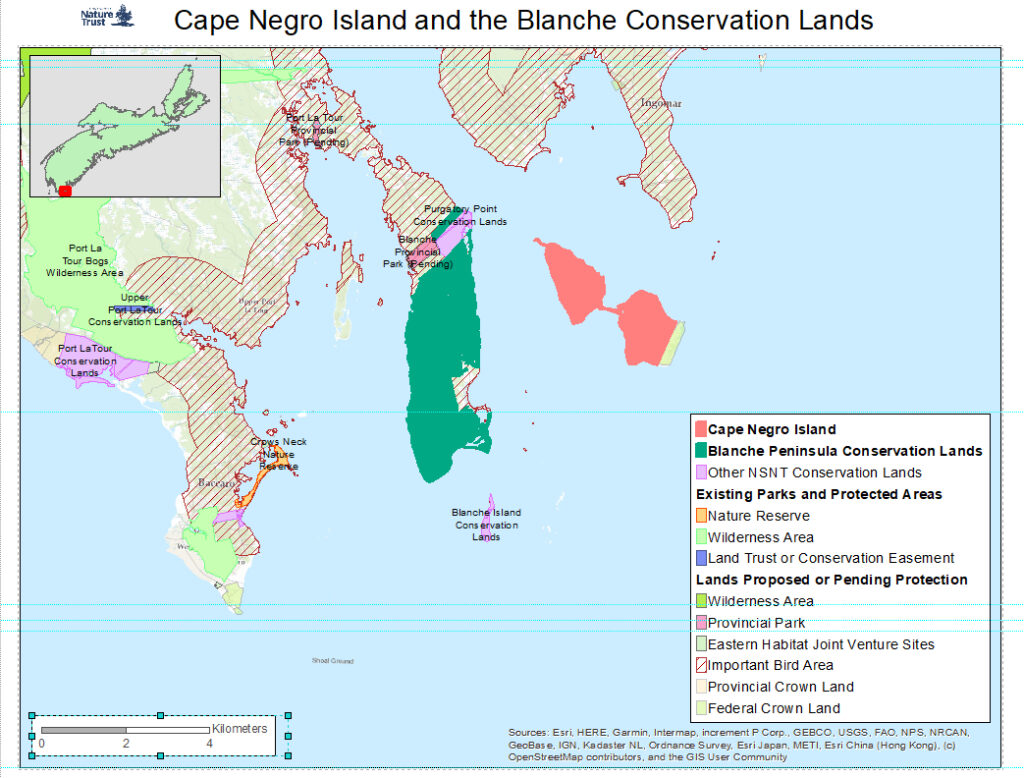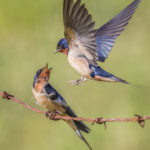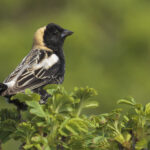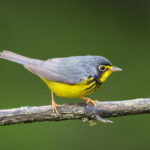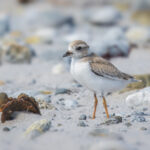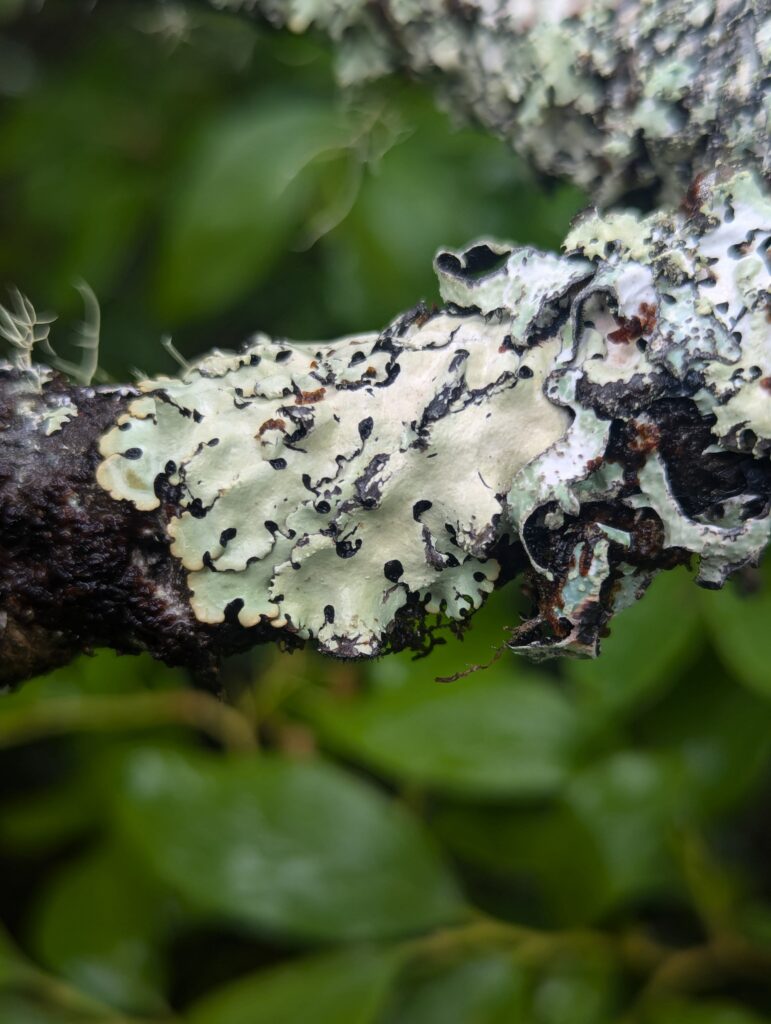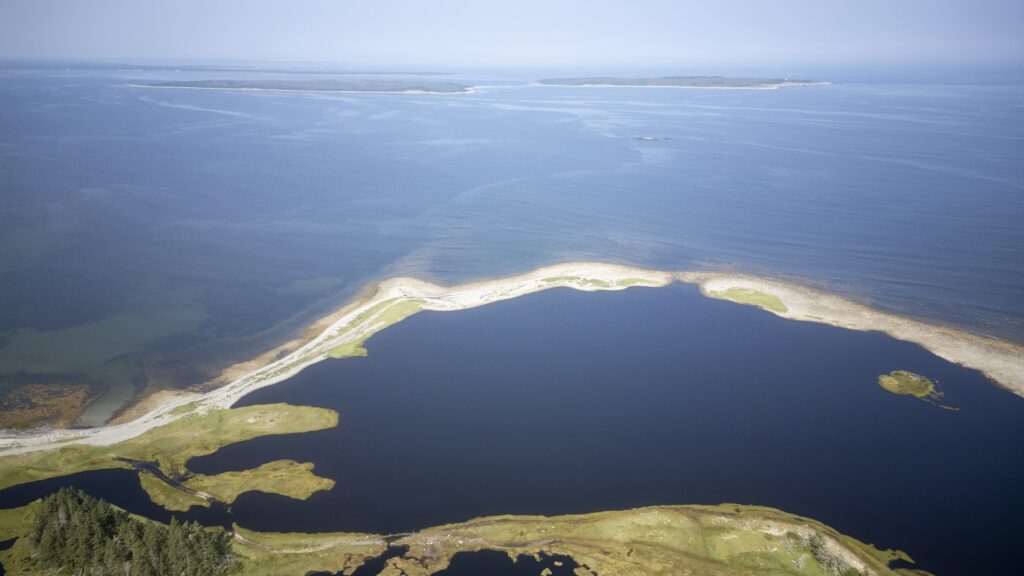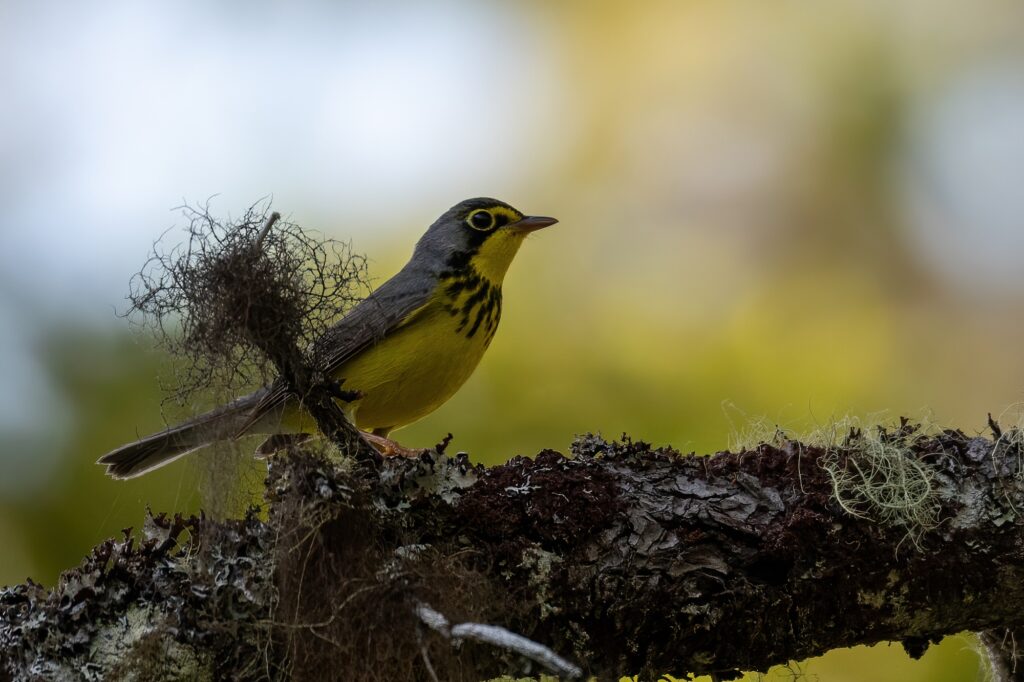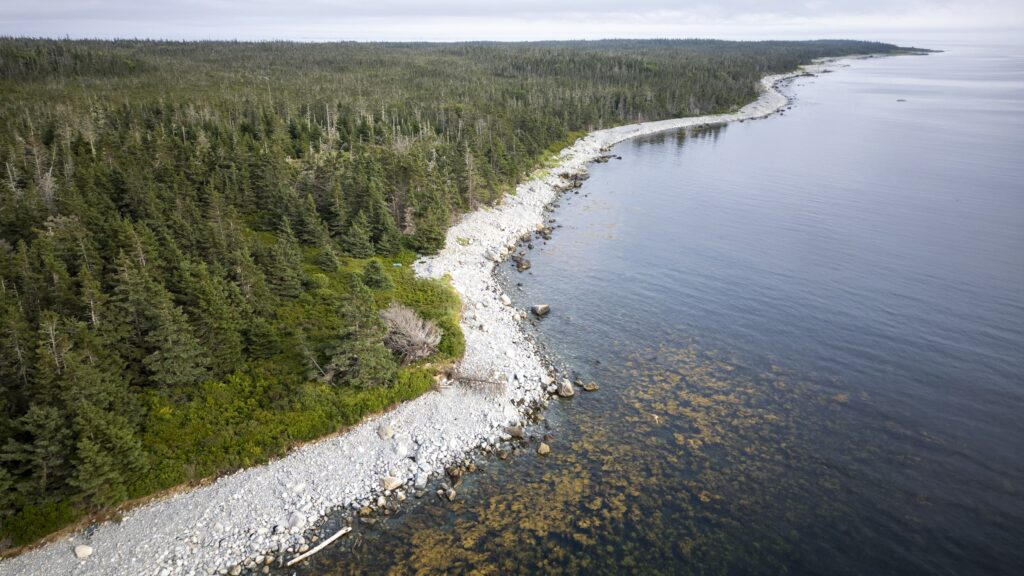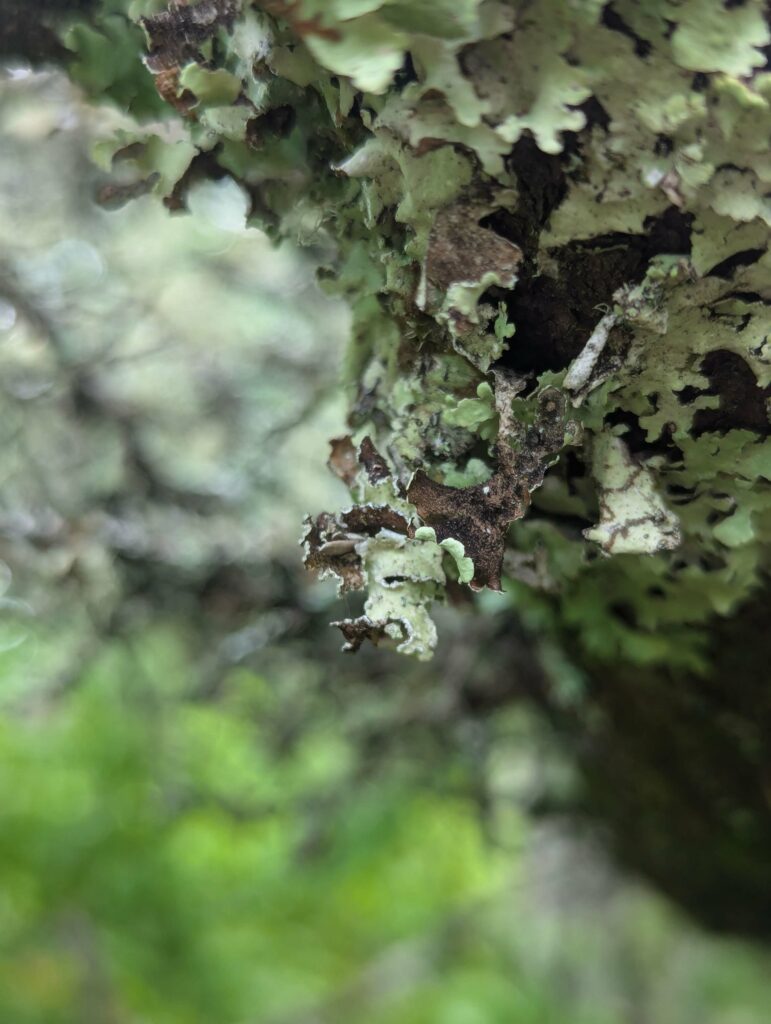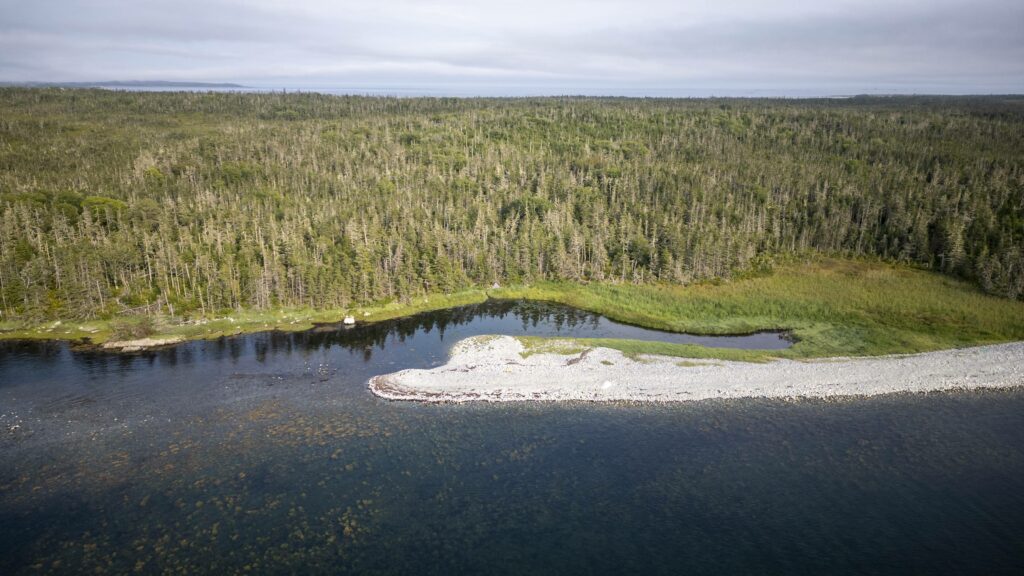Saving Blanche Peninsula is the Nature Trust’s most ambitious conservation project in our 30-year history. But with only a tiny portion of our coast protected, the overwhelming majority privately owned and facing unprecedented threats, and the urgent global call to action in saving land, particularly the coast, we have to act. Blanche Peninsula is likely the last chance to protect intact coastal habitat at this scale anywhere in Nova Scotia.
Update as of October 1, 2024: Thank your incredible support, we are proud to announce the protection of Blanche Peninsula!
At almost 730 hectares (1,800 acres), 10 times the size of Point Pleasant Park, Blanche Peninsula is one of the last highly biodiverse and intact coastal lands of its size in Nova Scotia. It supports over fourteen kilometers of pristine coastline, and diverse habitats including extensive coastal barrens, bogs, forests, wetlands, beaches and barachois ponds.
Recognized in the scientific community as one the most important coastal peninsulas in the province for bird conservation and recovery, it supports crucial stopover sites for migratory birds, and habitat for overwintering and nesting birds, including species at risk such as Barn Swallow, Bobolink, Canada Warbler and Piping Plover. It also recently hosted a very rare Burrowing Owl, only one of 3 records for the province. Preliminary field research identified 174 bird species, as well as endangered lichens.
Our government partners have already stepped up with $4.45 million in potential funding, including federal and provincial grants. The Nature Trust now needs just $150,000 in community support to unlock these funds and save Blanche Peninsula.
We know that Nova Scotians are deeply concerned about coastal protection and public access to the coast – and this is a chance to step up and make a real tangible difference. With your support, and with the support of our government partners, we are confident that we can make history.
